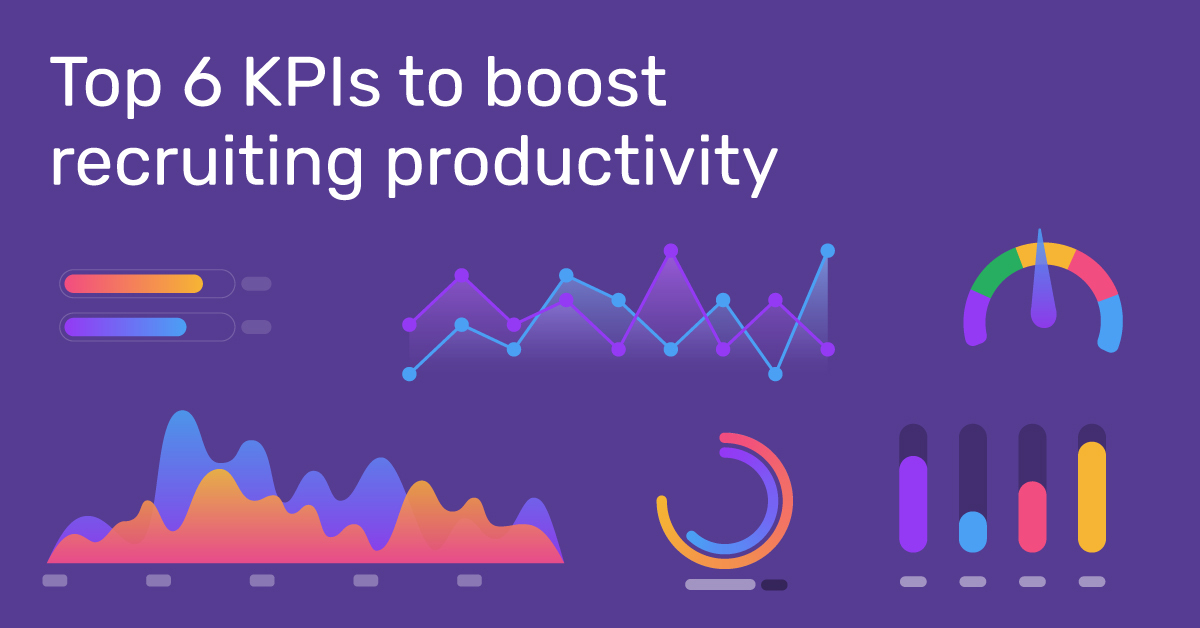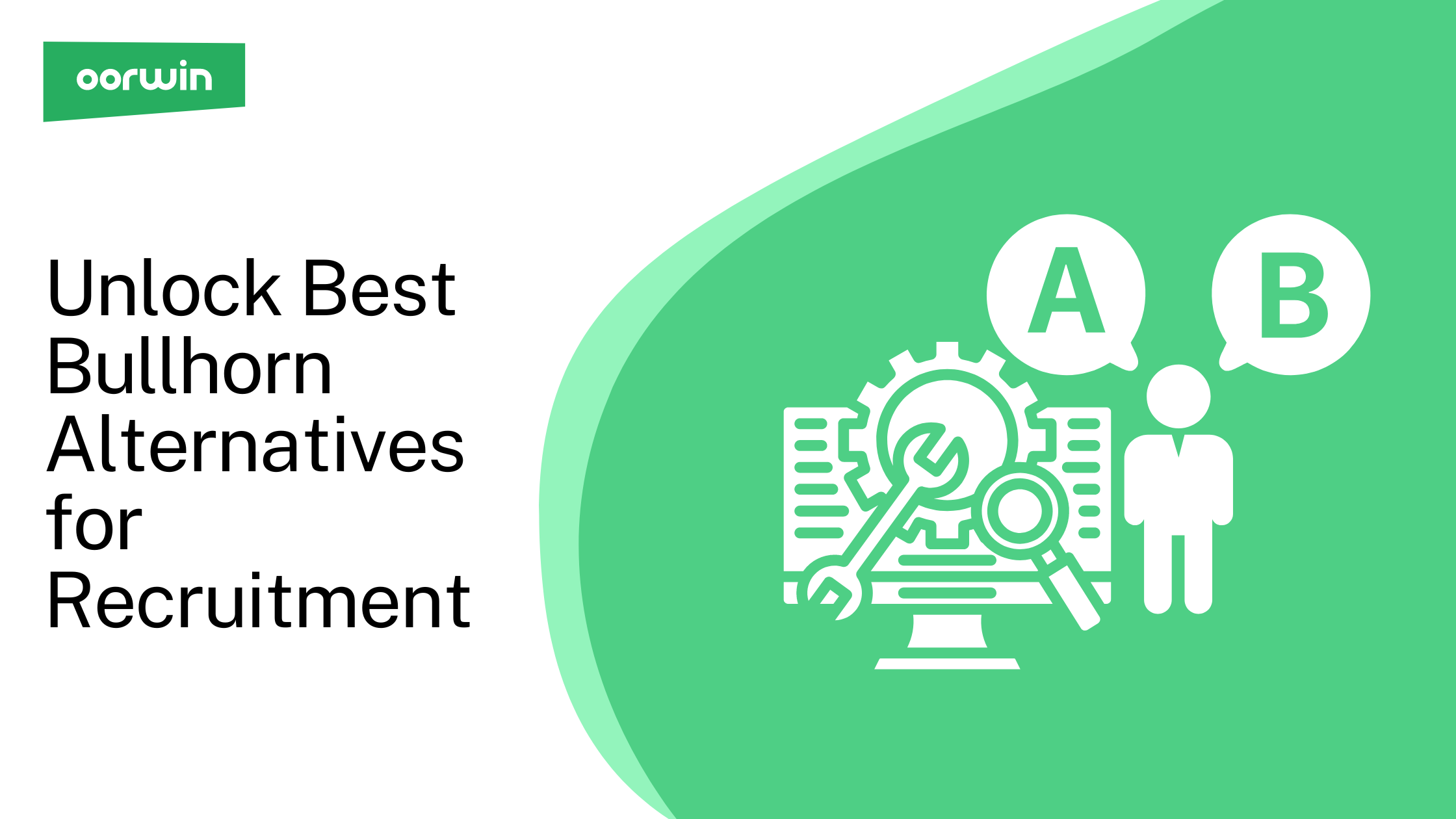Top Key Performance Indicators for Staffing in post-COVID world
Oorwin
7min read / 18 Nov 2020
Identify the most important key performance indicators (KPIs) staffing businesses need to track and learn how to leverage them to measure and boost productivity
As the staffing industry adjusts to the new, remote normal, it is now more crucial than ever that staffing and consulting businesses are able to effectively measure the performance of sales reps, recruiters, account managers, etc.
Before we get into what key performance indicators staffing businesses need to track, it will be useful to understand who is the ideal person to monitor the KPIs and who you should be sharing the key performance indicators with.
Who tracks the Key Performance Indicators?
Key performance indicators need to be tracked from the top to the bottom of the organization: C-suite, VP, director, branch manager, and finally recruiting and sales managers.
KPIs should not be mandated. They should ideally be an organic part of the organization and embedded in the fabric of the staffing organization itself.
If KPIs are being challenged by the sales teams or recruiters, you need to find out what is going wrong and explore what can be done to align your teams and KPIs.
Who to share Key Performance Indicators with
Staffing businesses also need to be transparent about the key performance indicators. One of the most important things staffing companies need to do is share their KPIs with their clients!
If a client is taking too long to hire a candidate after an interview, or if there is a trend of too many candidates being rejected, you need to communicate the metrics with the client. By sharing the metrics, you can work with the client on improving the process and removing any inconsistencies.
You can also help them understand what the industry standard for success is, and you can help them to make sure they are measuring that.
Lastly, there are new technologies that can help staffing businesses track key performance indicators with detailed metrics.
An AI-powered Applicant Tracking System (ATS) can help you make better submissions and improve the overall quality of hire. Video has also become a very important tool for staffing businesses. For instance, the ability to carry out video interviews is one of the easiest ways to improve the quality of hiring.
And without further ado, here are the top six key performance indicators a staffing business needs to track to remain competitive in the post-Covid world.
Top 6 key performance indicators to measure staffing productivity
1. Time to Hire
Before Covid-19, IT unemployment was at 1 to 2 percent. IT unemployment went up to 5% after the pandemic. It’s clear that there is still incredible demand in the market and short supply.
The time-to-hire key performance indicator can be broken down into much more specific actions and processes: submission to interview and interview to hire.
The submission to interview KPI will tell you how quickly your customer is moving. You must share this KPI with the client so you can work with them on improving the process. This will also help you understand which customers are better for your business and which aren’t.
2. Quality of Hire
The quality of hire is crucial for all staffing and recruiting businesses. Be it agency, corporate, or retail recruiting, setting the right benchmarks for candidate quality is an important key performance indicator for everyone.
To measure the quality of hire, the company needs to track all the variables between hiring and termination.
You must keep an eye out for negative trends. When you identify a problem, you must first check for internal issues, problems with processes and teams. You can then check external issues including negative trends at the customers’ end.
Also, with video interviews now becoming mainstream, it is crucial that you deploy video to improve the quality of hire. By improving the quality of hiring using video, you can instantly improve your quality of hire KPI.
3. Candidate Sourcing
Sourcing is vital to staffing companies. We have an unlimited amount of sources: Job boards, Linkedin, social media, sourcing partners, etc.
It is important for any staffing business to diversify sourcing and spread it across different media. The most crucial step any staffing business can take is to leverage social media for sourcing candidates.
You also need to track where you are getting the most submissions, interviews, and the best candidates. Once you know which channel works for you, you can start focusing more on it.
4. Cost per Hire
Leaders of staffing companies need to look at all end-to-end expenses: recruiters, salespersons, software, staff, infrastructure, etc. when evaluating cost per hire. They need to figure out the burden on the company by adding all the costs including payroll, overhead expenses, etc.
Salespersons and recruiters also need to know what the cost per hire is, so this key performance indicator needs to be transparent.
5. Candidate Pipeline
A good candidate pipeline is extremely important for any staffing business. When a customer hires a staffing company, they are looking for quick access to qualified candidates.
The customers expect the recruiters to have already established relationships with numerous candidates that have experience and that have already been vetted.
A staffing company must always maintain a list of ‘most placeable candidates. So when someone comes in with a requirement, you can immediately place the MPC who is a known quantity. You could also share lists of most placeable candidates with your clients to proactively create opportunities.
It is also important to use the right tools. An ATS or a Candidate Tracking System can help you build this pipeline and increase speed to market.
6. Offer to Acceptance
A vital element in the staffing business, offer to acceptance is a crucial key performance indicator.
Staffing businesses always try to retain their workers, and to do so successfully, they must first understand what drives the candidates. Failure to do so can increase rejection rates.
You can leverage an ATS to help you do this. If you see rejection go up, you can check internal processes to identify the issues. You could then go to the customer to find out the root of the problem.
If the pay rates are too low, you can negotiate with the customer and decrease the experience required to match the budget.
Also, engagement with candidates is now more crucial than ever. You need to understand why a candidate rejected an offer and try to change your processes to improve acceptance rates.
After Covid-19, rejections have been low as people wanted to hold on to their jobs in an uncertain business environment. But these will start to increase once people feel the market is healthy.
So it’s vital to track the offer-to-acceptance KPI and communicate it with all the stakeholders.
We will evaluate each of the key performance indicators in detail, explore their meaning in the context of staffing, and learn how tracking these KPIs can save you vast amounts of time, effort, and resources.
Popular Articles..
Blog
Blog
Blog
Get the latest Oorwin releases, updates, success stories & industry news
 Back
Back


